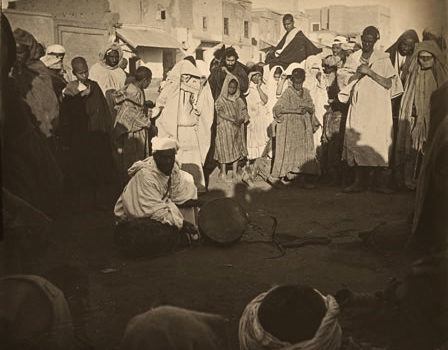In early June, 2011, the Djemaa El Fna square in Marrakesh celebrated it’s 10th anniversary as a UNESCO Heritage of Humanity Masterpiece in the presence of French Culture Minister Frédéric Mitterrand. The nomination campaign was led by the great Spanish writer Juan Goytisolo, fascinated by this place that day after day attracts crowds of people gathering to listen to story-tellers or to be frightened by snake charmers and monkey trainers.
Medicinal plant salesmen, old-fashioned water deliverymen in traditional gowns, transvestite dancers, fortune-tellers, acrobats, and jugglers mingle in a deafening clamor. Shrieks, a multitude of sounds alone manage to drown out the dry repetitive crackling of the gnaoua musician’s “qraqech” (metallic sidewinders). A colorfully extravagant world, obscured by puffs of smoke from the out-door restaurants.
This square, famous around the world, was the backdrop for many films including the opening to Alfred Hitchcock’s “The Man who Knew Too Much”. This was the symbolic location selected by terrorists to commit their bloody crime on the crowded patio of the popular Argana restaurant, certain of its global impact. International symbols cannot be erased from the map so quickly, especially historic locations that are part of the collective memory of the great Moroccan south (The square dates back to the creation of Marrakesh near 1070). The entertainers and storytellers have since very naturally returned to the Djemaa el Fna square.
This anniversary celebration was the opportunity for the Maison de la Photographie of Marrakesh to display exceptional images taken between 1870 and 1950 in an abandoned bank on the square. Anonymous pictures alongside professional shots taken by Bertrand, Felix, Blin, Flandrin, Garaud. They left behind visual treasures of the history of Morocco. The Djemaa el Fna square, whether in black and white or sepia, already appeared busy, crazy, a bit scary, full of people with abrasive stares. An open space, more popular, a little courtyard of miracles… without tourists. An enveloping atmosphere that alternates between wide-angle views, close-up shots, and scenery. An example of magnificent anthropological work and photographic talent.
Paul Alessandrini
Pamphlet « Place Jemaa el Fna »
Published by the Maison de la Photographie, Marrakech
46 rue Souk Ahal Fès, Marrakech
Ben Youssef District
















